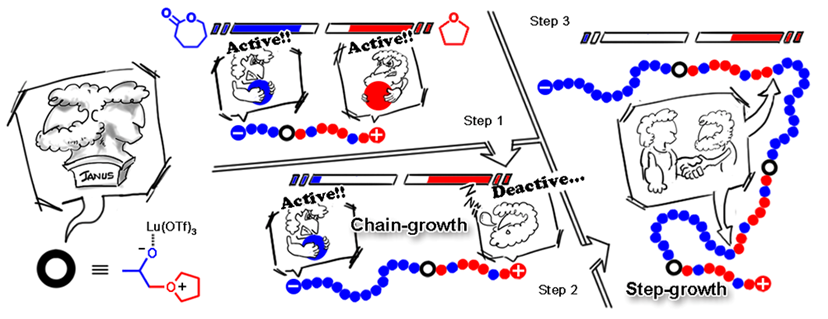Janus Polymerization |
| Time£º2014-04-09 13:01 |
Lixin You and Jun Ling. Macromolecules, 2014, 47 (7), 2219–2225.
DOI: 10.1021/ma500173c
Abstract£ºIs it possible to combine cationic and (coordinated) anionic ring-opening polymerizations (CROP and AROP) into a unimolecular chain? In this work, we design polymerizations of ε-caprolactone (CL) and tetrahydrofuran (THF) using a single catalytic system of lutetium triflate/propylene oxide (Lu(OTf)3/PO) in which a cationic copolymerization of THF with CL and an AROP of CL perform at two chain ends of a growing chain. Kinetic and mechanistic studies demonstrate that the two chain-growth ROPs which have no mutual interference up to 90% of CL conversion keep a living manner producing diblock copolymers of PCL-b-P(THF-co-CL) with narrow polydispersities below 1.2. Afterward, the depletion of CL triggers a final step-growth polymerization via intermolecular coupling reaction of cationic and anionic chain ends, developing multiblock polyester–polyether elastomers of [PCL-b-P(THF-co-CL)]m. A concept of “Janus polymerization” is defined as a combination of cationic and anionic polymerizations on the two ends of a single growing chain, involving an initially living chain-growth polymerization and a subsequently self-triggered step-growth polycondensation.

|
Read£º2185
|
